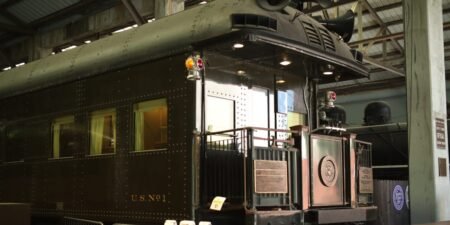X
Bluesky
Copy link
Impact Link
Save
Saved
Read in app
subscribers. Become an Insider
and start reading now.
Have an account? .
- After an eight-year, $2 billion renovation, the Waldorf Astoria New York is reopening in September.
- The hotel blends historic Gilded Age furnishings with modern luxuries for guests and residents.
- Highlights include the restored Peacock Alley and Silver Corridor plus redesigned suites and condos.
They don’t call the Waldorf Astoria New York “The Greatest of Them All” for nothing.
After an eight-year renovation that cost a reported $2 billion, the iconic hotel is finally set to reopen in September.
Furnishings dating back to the Gilded Age, such as ceiling murals that were part of the hotel’s original location on Fifth Avenue, have been painstakingly restored by hand. Other parts of the landmark building have been updated with state-of-the-art luxuries, such as new four-bedroom condominiums with sale prices starting at $18.75 million.
I visited the Waldorf Astoria in July for a sneak peek of the hotel before it opened to the public. Take a look inside.
The Waldorf Astoria New York spans an entire block between 49th and 50th Streets in Midtown Manhattan.
The original Waldorf Astoria was located on 33rd Street and Fifth Avenue.
The Waldorf Hotel, owned by William Waldorf Astor, opened in 1893. His cousin, John Jacob Astor IV, then opened the rival Astor Hotel next door in 1897. The two hotels merged that same year, creating the first Waldorf Astoria with a walkway known as Peacock Alley connecting the buildings. It was knocked down in 1929 to make way for the Empire State Building.
The new Waldorf Astoria opened in 1931 and stands at 47 stories tall.
The hotel is split into 375 hotel rooms and 372 residences.
The hotel’s main entrances aren’t open yet due to ongoing construction, so my tour began at one of the residential entrances.
Residents who live at The Towers at Waldorf Astoria use separate entrances and enjoy 50,000 square feet of amenities like a private fitness center and access to the exclusive Empire Club’s offices and coworking spaces.
First, I toured a sample condominium residence, where prices range from $1.875 million for a studio to $18.75 million for a four-bedroom apartment.
The units can come furnished by interior designer Jean-Louis Deniot, or residents can furnish the condos themselves.
A case in the sales gallery displayed artifacts from the Waldorf Astoria’s early years.
The display featured silver trays, glasses, uniform pieces, room keys, and a tin that once contained the Waldorf’s rum-and-brandy-flavored fruit cake.
I got my first look at the new Waldorf Astoria hotel as we entered an elegant hallway leading to the lobby.
The space was furnished in rich colors, including plush red armchairs, dark wood tables, and decorative columns along the burnt-orange walls.
Walking into the refurbished Park Avenue lobby for the first time, I was blown away by its enormity and opulence.
The high ceilings and ornate windows created an expansive, open space that made me forget I was in the middle of Manhattan.
The lobby was decorated from top to bottom. Neoclassical murals were painted beneath the ceiling molding, and a mosaic in the center of the floor, titled “Wheel of Life” by French artist Louis Rigal, consisted of 148,000 hand-cut marble tiles.
Seating alcoves located throughout the lobby will host Yoshoku, a Japanese restaurant serving sushi and small plates.
Yoshoku will offer a six-course kaiseki menu as well as an à la carte menu.
We proceeded into Peacock Alley, featuring the famous 1893 World’s Fair Clock purchased by John Jacob Astor IV.
Peacock Alley originally served as a corridor between the Waldorf Hotel and the Astoria Hotel. It was named for the way that members of high society promenaded and “peacocked” through in their best outfits.
At the center of the modern Peacock Alley is the 1893 World’s Fair Clock, which was commissioned by Queen Victoria and purchased by John Jacob Astor IV for the original Waldorf Astoria location on 33rd Street. The hotel’s original black marble columns were also restored during the renovations.
Peacock Alley featured singer Cole Porter’s restored piano.
Porter lived at the Waldorf Astoria from 1934 until his death in 1964. It was at this piano that he wrote hits such as “Anything Goes” and “I’ve Got You Under My Skin.”
The check-in and reception area was opened up as part of the renovations.
The hotel’s original layout closed this area off from Peacock Alley, causing congestion. In the new floor plan, the check-in desks are situated in an open space complete with a new black marble fireplace made from the same type of stone as Peacock Alley’s columns.
Stairs from the porte-cochère, where guests arrive, lead straight into the check-in area.
Guests arriving by car can leave their vehicle at the porte-cochère for valet parking.
The Waldorf Astoria’s hotel room rates start at $1,500 per night and range from 570 to more than 5,000 square feet.
The hotel rooms were furnished by French interior designer Pierre-Yves Rochon. I toured a one-bedroom suite, which starts at $2,995 per night, according to the Waldorf Astoria’s website.
The bathrooms feature luxurious amenities like heated marble tile floors, walk-in showers, and separate dressing areas.
Other luxury room perks include Nespresso machines, Frette linens, and Aesop skincare products.
I was surprised by how effectively the room’s double-glazed windows blocked out noise from New York City’s streets below.
I couldn’t hear any of the honking horns or groaning trucks that normally serve as background noise in Manhattan.
Next, I visited Waldorf Astoria’s Silver Corridor, which was inspired by the Hall of Mirrors at the Palace of Versailles.
The mirrored hall, which serves as an event space, measures 1,995 square feet.
The ceiling featured murals by American artist Edward Emerson Simmons, which were restored from the original Waldorf Astoria location.
The chandeliers were also restored by hand.
The Basildon Room featured an ornate ceiling and a marble fireplace mantel sculpted by British sculptor John Flaxman.
Measuring 1,649 square feet, the room can hold 189 people.
The ceiling art was sourced from the 18th-century dining room at Basildon Park Manor in England.
The small oil paintings by 18th-century artist Angelica Kauffman, which depict scenes from Dante’s “The Divine Comedy,” were removed from their original settings and reinstalled in the ceiling of the Basildon Room.
When I visited in July, other rooms that will host events were serving as holding spaces while workers prepared the hotel’s finishing touches.
The Astor Room’s Louis XVI-style furnishings were obscured by shelves, boxes, and stacks of chairs.
The only room I wasn’t allowed to photograph was the Grand Ballroom, but here’s what it looked like in its heyday.
At 9,990 square feet, this 1,500-capacity, three-tiered event and performance space has hosted star-studded gatherings such as the first Tony Awards ceremony, Rock & Roll Hall of Fame induction ceremonies, and President John F. Kennedy’s birthday gala.
The room was full of construction materials when I visited, so it wasn’t quite ready for its close-up yet, but its grand architecture still remained jaw-dropping.
I ended my tour at Lex Yard, the Waldorf Astoria’s signature restaurant.
As the birthplace of the Waldorf salad and, legend has it, Eggs Benedict, the Waldorf Astoria’s restaurants have a storied history.
Chef Michael Anthony will oversee the new Lex Yard, which will serve farm-to-table American classics in an Art Deco-inspired space spanning two floors.
New York’s “unofficial palace” blends historic Gilded Age furnishings and Art Deco architecture with modern luxuries for guests and residents.
I exited at the hotel at the porte-cochère, where it was easy to envision the wealthiest celebrities and business tycoons of the 21st century lining up for their chance to enjoy its opulent offerings.
Read the full article here
















